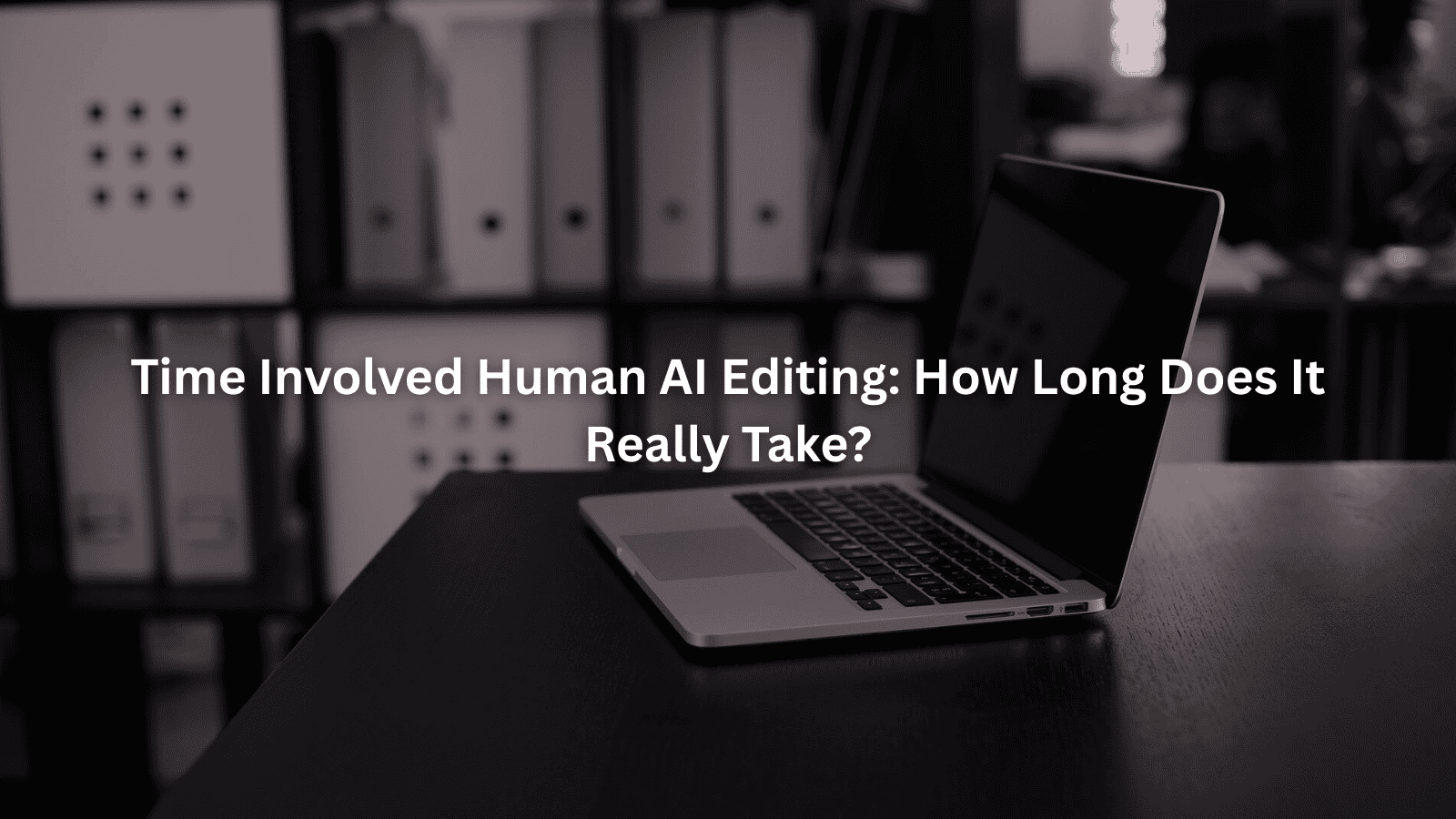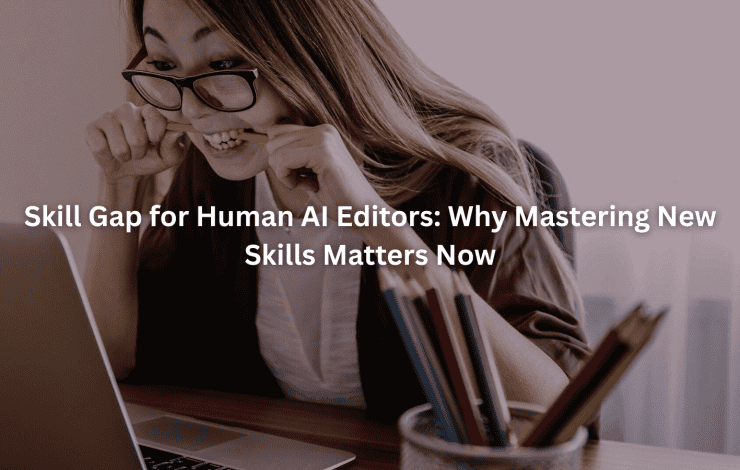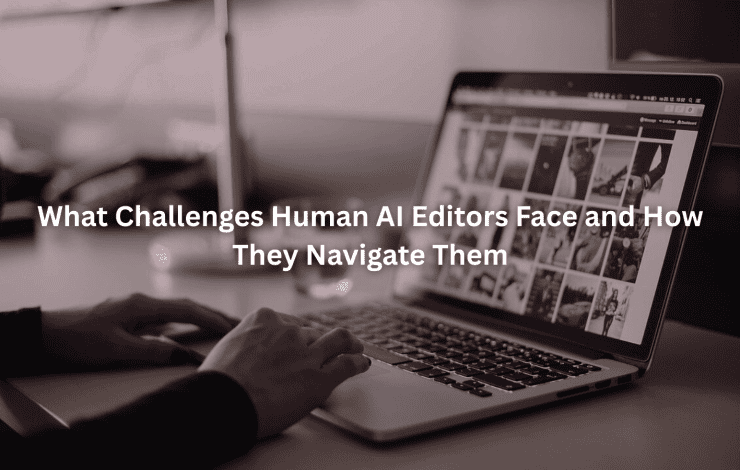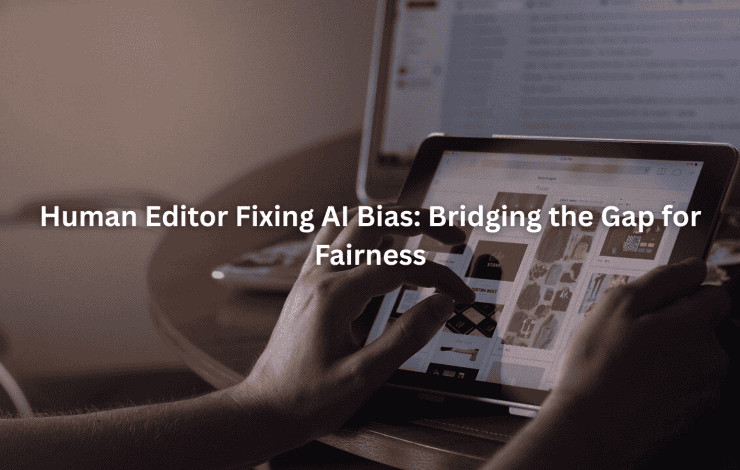AI and human editing might seem like an odd couple. Working at Jet Digital Pro showed us just how much the timing swings around. Quick blog fixes? Maybe 10-30 minutes tops. But those longer pieces, the ones hitting 2,000 words? They eat up for three hours easily.
It’s not just running spell-check and calling it a day. Someone’s got to shape the voice, double-check every fact, and yeah – make sure Google won’t hate it. Sure, AI throws together the first draft pretty quick, but there’s no rushing the human touch. Guess that’s the trade-off between speed and style.
Key Takeaway
- Mixing human edits with AI takes anywhere from a quick 10 minutes for basic stuff to a solid 3 hours when you’re dealing with the heavy hitters
- Getting it right means playing with those AI prompts, making sure facts check out, tweaking how it sounds, and yeah – keeping Google happy
- How long it takes? That’s gonna depend on how much you’re writing, what it’s about, if the AI’s having a good day, and whether your editor knows their stuff (but hey, AI usually cuts the work down by like 30-60%)
Time Involved in Human AI Editing: Average Duration and Task Breakdown
Human AI Editing Average Time Spent per Task
Time gets weird when you’re cleaning up AI writing. Social posts and quick blog intros? Maybe 10 minutes if you’re lucky, sometimes stretching to half an hour. That’s usually enough to fix the robotic stuff and make it sound human. God knows we’ve seen some awkward phrasing. And then there’s the bigger stuff.
Look. Blog posts and reports are whole different animals. These can easily eat up three hours of your day. You’ll find yourself moving entire sections around, fact checking every single detail because AI loves making stuff up. Plus you gotta make sure it all flows together, like it came from one brain instead of a computer.
And here’s something wild we learned the hard way. AI writing needs way more hand holding than human stuff does. Sometimes you’re basically rewriting the whole thing from scratch. But wait. Even with all this extra fussing around, we’re still saving time. Like, a lot of time. Something between 30 and 60 percent faster than if we’d just written it ourselves from the beginning. Weird how that works out.
Human AI Editing Key Stages and Time Allocation
Breaking this whole thing down, there’s a few main parts to it. First up is prompt refinement – basically telling the AI what you want. Sometimes that’s quick, sometimes you’re there all day trying to get it right. But nail that first step, and everything else goes smoother.
Then there’s fact-checking, cause these AIs love making stuff up. That eats about 20 to 40 percent of our time, depending on how complicated the subject is. AI is great for handling transactional, low-level tasks… but AI is only as good as the data it’s trained on. Humans will become even more indispensable when it comes to empathy, problem-solving, and creating seamless, personalized experiences. [ 1 ]
After that comes the tone and style fixes. This is where you make it sound less like a robot wrote it. That’ll take up maybe 15 to 30 percent of your time.
Last but not least, there’s SEO tuning. Gotta make Google happy – keywords, meta stuff, linking things together. Takes about 10 to 20 percent of the time, but you can’t skip it if you want anyone to actually find your content.
Factors Influencing Human AI Editing Time
Look, editing isn’t just about running spell check and calling it a day. There’s a whole mess of things that can make a quick job turn into an all-day affair:
- The sheer length of the thing (obviously)
- How complicated the topic is
- Whether the client wants casual or PhD-level writing
- If the AI was having a good day or not
- How much caffeine the editors had
Sometimes you get lucky. The AI spits out something halfway decent, and you’re golden. But then there’s those other times… man. You know the ones, full of challenges human editors face when working with AI content that turn a quick fix into an all day grind.
Truth is, having an editor who knows their stuff makes all the difference. Give me someone who’s been wrestling with AI content for a while over a newbie any day. They’ve seen all the weird quirks these AI writers have, all their little tells. They know when to push through and when to just start over. That’s worth its weight in gold right there.
Tools and Technologies Affecting Editing Speed
Over at Jet Digital Pro, we’ve got our favorite tools to keep things moving. Those AI writing programs kick out drafts pretty quick, grammar checkers catch the dumb stuff, and we’ve got some solid fact-checking databases that save us from going down research rabbit holes. Plus our SEO tools just kind of do their thing in the background – no need to stop and fiddle with them too much. Put it all together, and we save a bunch of time without letting quality slip.
Human AI Editing Workflow: Process Stages and Time Management
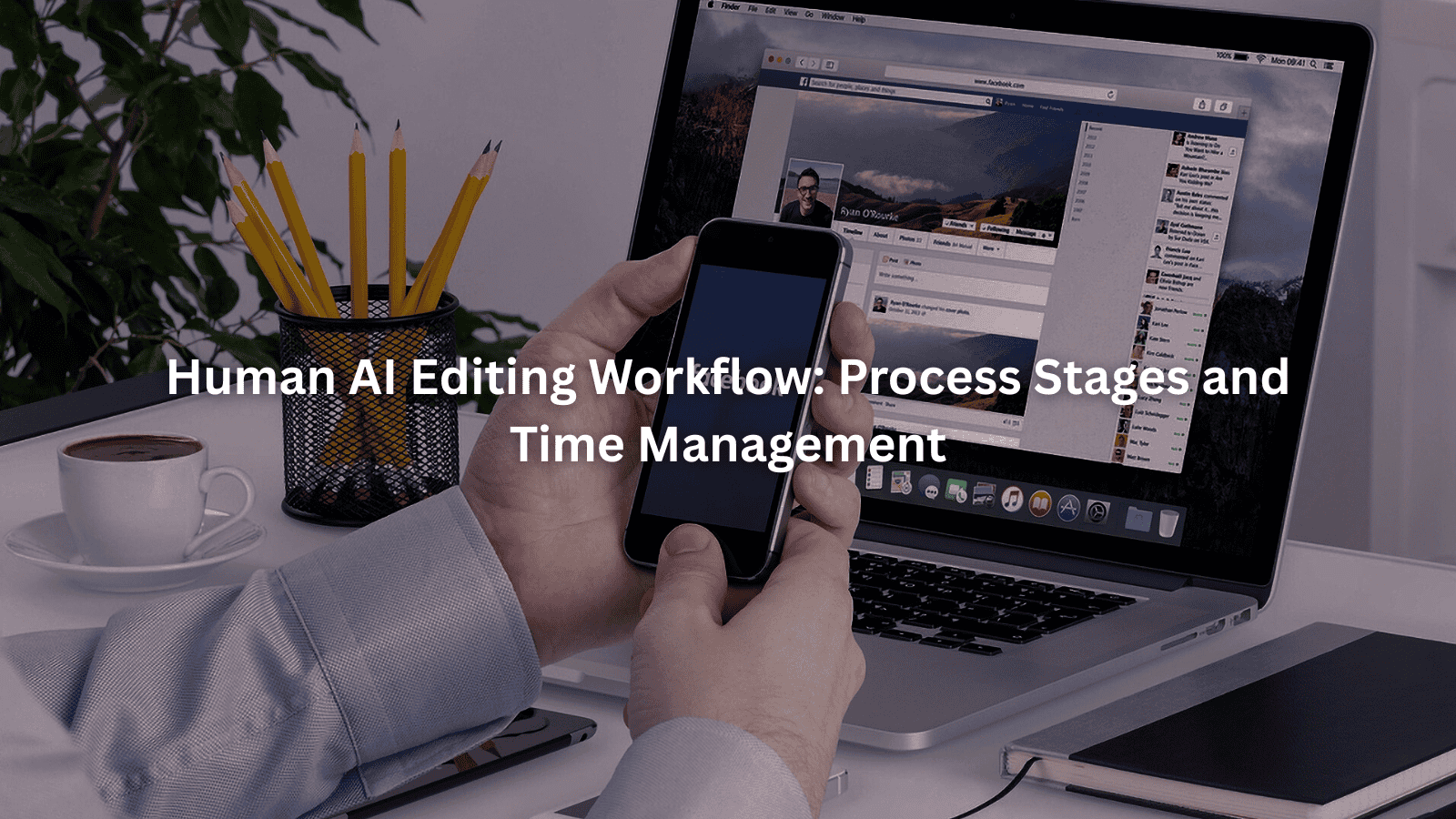
AI Content Generation Time and Initial Output Quality
Here’s the thing about AI – sure, it spits out drafts faster than any human could type. Great. But then comes the real work: someone’s gotta check if what it wrote makes any sense. Quick stuff might take just a few minutes to look over, but those longer pieces? You’re looking at maybe half an hour just to figure out if it’s even usable. Sometimes the AI nails it right off the bat (don’t get used to it), and sometimes you’re hitting that generate button over and over hoping it’ll finally get the point.
Deep Editing Duration and Complexity
The real meat of editing happens in the weeds. There’s just no way around it. You’ll spend most of your time on these key things:
- Going line by line to fix the flow
- Adding stuff the AI totally missed
- Moving paragraphs that don’t make sense where they are
- Making the logic actually work
- Clearing up arguments that sound smart but say nothing
And sometimes? Well sometimes the AI gives you complete garbage to work with. Or maybe you’re dealing with some really complex topic that needs a human touch. Those are the days you park yourself in front of the screen for hours, overcoming common AI content flaws with a human touch just to make it work.
Copy Editing and Proofreading Time Estimates
Once the big changes are done, we polish the language. This includes grammar fixes, word choice, flow, and readability. Proofreading is the final quality check and usually takes about 10 to 20 percent of the total editing time. We always leave time here because a single typo can undermine trust.
Human-in-the-Loop (HITL) Interaction Timeframes
Human-in-the-loop refers to the back-and-forth process where humans review AI suggestions and feed corrections back. Depending on workflow design, response times vary. At Jet Digital Pro, we aim to minimize wait times, often keeping review cycles under a few hours to maintain momentum. But in some cases, especially with complex projects, HITL can stretch to a day or two.
Measuring and Optimizing Human AI Editing Time
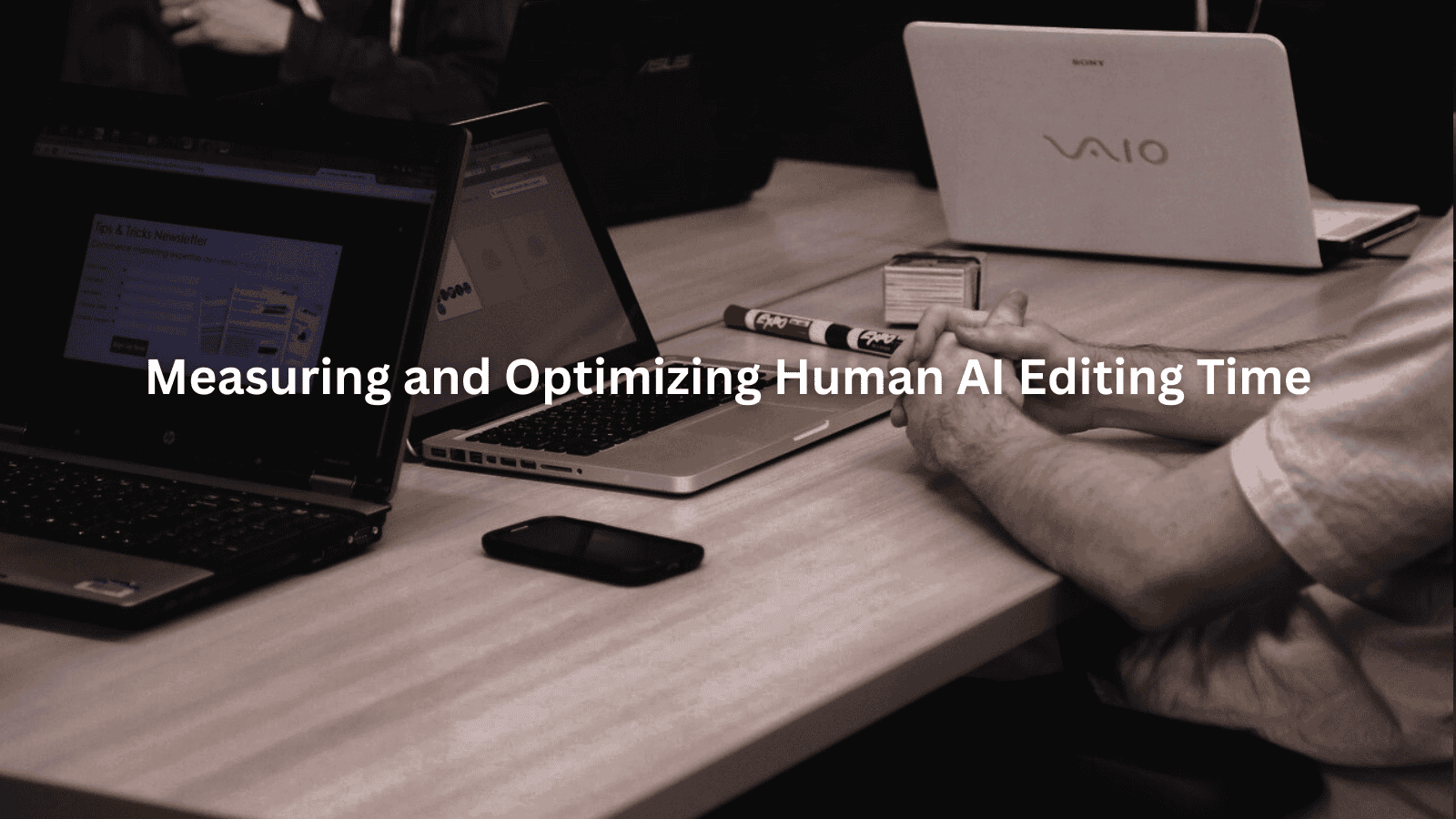
Edit Distance Metrics as Time Estimation Tools
We’ve experimented with edit distance metrics to predict editing effort. These algorithms measure how much text changes from AI draft to final version, correlating well with actual time spent. For instance, more rewrites usually mean longer editing sessions. This data helps us allocate resources and estimate delivery times more accurately.
Time Efficiency Tradeoffs in Human AI Collaboration
AI speeds up routine tasks like grammar correction or formatting. But creative or complex edits still require human time. We’ve found that while AI cuts down total editing time by up to 60 percent, some stages, like fact-checking or style tuning, don’t get much faster.
Bottlenecks and Scalability Constraints in Human AI Editing
Human involvement remains the bottleneck for scaling editing workflows. If you’re handling high volumes, waiting on editors can slow things down. We tackle this by designing workflows that batch similar tasks and use automation where possible, but the human factor sets the pace.
This mirrors insights from HR professionals who have scaled AI in workflows: technology boosts efficiency, but must never come at the cost of empathy, ethical oversight, and human relationships. [ 2 ]
Feedback Loops Impact on Time Reduction Over Iterations
One advantage of human AI editing is that our corrections feed back into AI training. Over time, this improves AI output quality, reducing editing time on future projects. We’ve seen steady improvements as AI “learns” from our edits, which benefits both speed and accuracy.
Practical Insights and Time Management Strategies in Human AI Editing
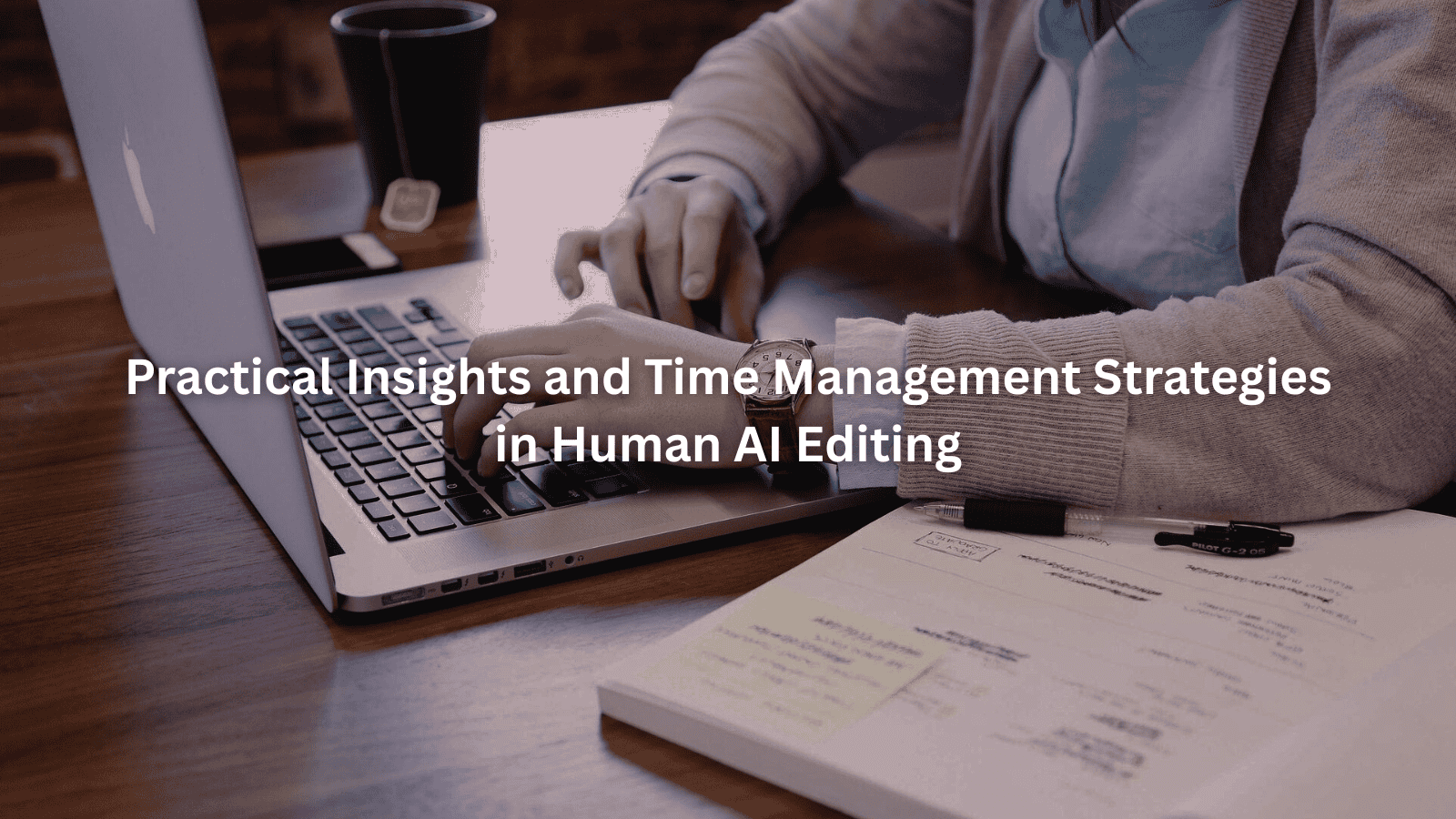
Best Practices for Reducing Editing Time Without Quality Loss
We recommend prioritizing editing stages based on content needs. For example, if accuracy is critical, spend more time on fact-checking and less on SEO tuning. Using specialized tools for each phase can also speed things up without compromising quality.
Time Allocation for Different Content Types and Use Cases
Are You a Digital Agency?
White Label SEO Content Services for Agencies
Scalable, customizable, and results-driven content solutions for your clients.
Short-form content deserves quick turnarounds, under 30 minutes. For long-form or technical writing, budgeting 2 to 3 hours is more realistic. Knowing these benchmarks helps set client expectations and manage workflow.
Human Editor Skill Development to Enhance Efficiency
Training editors on AI’s strengths and weaknesses pays off. Editors who understand AI quirks can spot errors faster and make smarter fixes, closing the skill gap for human AI editors so every project runs smoother.
Monitoring and Adjusting Human AI Editing Workflows
Tracking time spent on each editing stage lets us identify bottlenecks and opportunities for improvement. At Jet Digital Pro, we use this data to tweak workflows continuously, balancing speed and quality.
Here’s what we’re looking at over at Jet Digital Pro:
- Keep tabs on how long each editing stage takes (sometimes it’s painful to look at)
- Figure out where we’re getting stuck (usually it’s those pesky technical sections)
- Look for places where we can speed things up
- Watch for quality dips when we try to go faster
- Adjust our process based on what actually works
- Test different approaches till something clicks
- Track editor burnout (cause yeah, that’s a thing)
- Compare results across different types of content
Nobody loves tracking this stuff, but it keeps us honest. Plus it helps us figure out where to put our energy. Sometimes what looks good on paper just doesn’t work in real life.
Human AI editing is a work in progress, but it’s our best shot at combining the speed of machines with the nuance of human judgment. We’ve seen firsthand how understanding the time involved helps us manage projects better and deliver content that works. If you want to streamline your editing process, balancing AI tools with skilled human editors is the way to go, and that’s exactly how we approach it at Jet Digital Pro.
FAQ
How does the quality of AI output affect the time human editors spend on editing?
When AI produces a cleaner, more accurate draft, human editors spend less time fixing errors and rewriting content. But if the AI output is rough or full of mistakes, editors must invest extra hours reshaping and fact-checking the material. So, better AI quality directly cuts down editing time and makes the whole process smoother.
Why does fact-checking take such a large portion of editing time in human AI editing?
Need a Strategic SEO Content Partner?
Let’s craft SEO content that ranks, converts, and grows your brand.
Talk to UsAI sometimes invents details or mixes up facts, so human editors need to verify every claim carefully. This step is critical because inaccurate information can damage credibility. Fact-checking can take up to 40% of the editing time, especially for technical or research-heavy content where precision is key.
In what ways does editor experience influence the time needed for human AI editing?
Experienced editors familiar with AI-generated content can spot problems faster and know where to focus their efforts. They often use shortcuts and tools effectively, cutting down editing time. Less experienced editors might get stuck on certain issues or spend more time second-guessing the AI’s output, which can slow the process.
How do different content types change the time spent on human AI editing?
Short-form content like social media posts or simple blog snippets usually requires less than 30 minutes to edit. But long-form articles, technical papers, or content needing strong storytelling can take hours. Complex topics demand more fact-checking and stylistic adjustments, which lengthen the editing process.
What role do editing tools play in managing the time involved in human AI editing?
Editing tools like grammar checkers, fact databases, and SEO software help speed up routine tasks. They reduce the manual effort needed for spotting errors and optimizing content. While these tools don’t replace human judgment, they let editors focus on higher-level changes, improving overall efficiency and cutting editing time.
Conclusion
Human-AI editing blends speed with precision, but it’s never instant. From quick prompt tweaks to hours of deep editing, the right process balances quality and efficiency. At Jet Digital Pro, we pair AI’s fast drafting with an 11-step human review to create high-quality, Google-resilient content. For agencies wanting results without the workload, let’s talk about scaling your content today.
References
- https://www.imd.org/blog/digital-transformation/ai-in-hr
- https://customerthink.com/sorry-ai-cant-fix-your-cx-but-talented-humans-can
Related Articles
- https://jetdigitalpro.com/challenges-for-human-editors-of-ai-content/
- https://jetdigitalpro.com/overcoming-ai-content-flaws-humanly
- https://jetdigitalpro.com/skill-gap-for-human-ai-editors
P.S – Whenever you’re ready,
we’re here to help elevate your SEO content.
Partner with us for strategic, scalable content that drives real organic growth.
Contact Us Now
